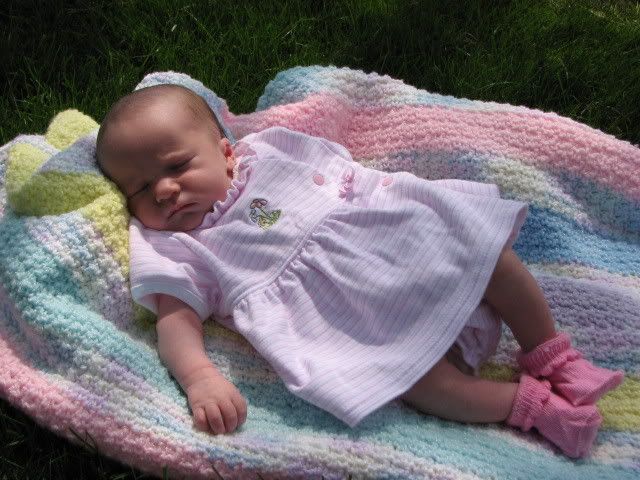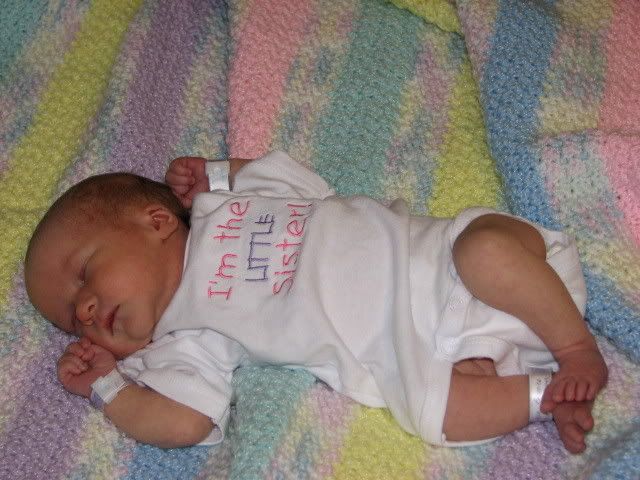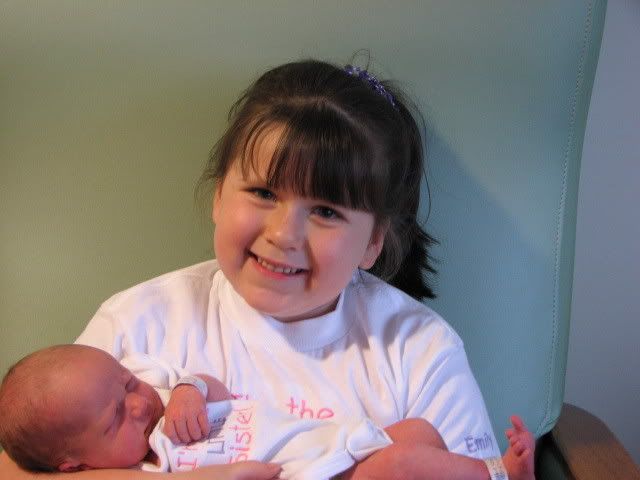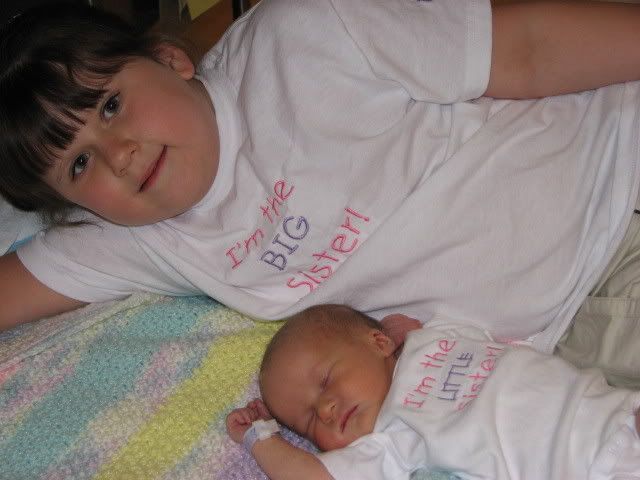 I found this article on MSN Money and found it quite interesting and very true. Hope this advice helps. I have noticed most of these points to be correct while shopping. For example, in the toothpaste aisle, children's toothbrushes and toothpaste is shelved below the knee for your children to see and pick out what they want. Pretty sneaky, but it works!
I found this article on MSN Money and found it quite interesting and very true. Hope this advice helps. I have noticed most of these points to be correct while shopping. For example, in the toothpaste aisle, children's toothbrushes and toothpaste is shelved below the knee for your children to see and pick out what they want. Pretty sneaky, but it works!
Don't succumb to retailers' simple ploys. Here's how they get you to buy -- and 10 ways to fight back.
By The Simple Dollar
Ever notice how you can go to a store to pick up just one thing and then, by the time you get to the check stand, you have five or six things in your cart and a bigger bill than you had anticipated?
This happens over and over because department stores use an array of techniques (grocery stores use many of the same tactics) to get you to pick up these items. By itself, each technique isn't very strong -- it's the use of them in combination that is powerful.
Here's a list of 15 of the best tricks. After the list, watch for 10 ways to combat these techniques so you can get in and out of stores with your finances intact.
1. Shopping carts. Most department-store customers enter the store intending to buy only an item or two, but the shopping carts are right there by the entrance and, oh, wouldn't it be convenient to have it so I can lean on it a bit while walking around and to put my stuff in it?
The cart has a huge bin compared with the size of most items for sale in the store, making it psychologically easy to toss in an item you don't need -- after all, there's room for plenty more, right?
2. Desirable departments are far away from the entrance. Most of the items I go to a department store to buy, such as light bulbs and laundry detergent, are located many, many aisles from the entrance. This means I spend my time walking by a lot of consumer goods on my way to find the item I want.
Because these consumer goods are effectively marketed to me, there's a good likelihood that I'll spy something that I don't necessarily need and toss it in the cart.
3. The toy section is far, far, far away from the entrance. Naturally, if I take my son to the store, he wants to visit the toy section. He gets excited and starts shouting "Ball! Ball!" to me when we go in because he remembers the enormous plastic balls in the toy section.
I tell him that if he's good, we'll go look at the balls, and at the end of the trip, we usually make our way over there. What do we see? Lots of children in that area, which means that there are parents that follow their children.
4. Impulse-oriented items are near the checkouts. Stores stock the latest DVD releases and "froth" magazines there, along with overpriced beverages and candy.
Why? Because people leaving the store are thirsty, and they're going to be standing in line for a bit, which is the perfect place to hook them with some entertainment options.
5. The most expensive versions of a product are the ones at eye level. Take a look sometime at the arrangement of different choices for a particular product, such as laundry detergent. Almost every time, the most expensive options per unit are placed at eye level, so you see them first when you enter an aisle. The bulk options and better deals are usually on the bottom shelves.
6. Items that aren't on sale are sometimes placed as though they are on sale, without using the word "sale." I noticed this over and over with diapers; the department store would display a rack of them with a huge sign above them displaying the price, but it would be the same price I paid for them a week ago. Unsurprisingly, the diapers displayed like that were always the most expensive kind.
7. Commodity items, such as socks, are surrounded by noncommodity items, such as shirts and jeans. If I'm looking to buy some socks, I have to traverse through a number of racks full of different types of clothing in the clothing section just to reach them.
Why? If my mind is already open to the idea of buying clothes, I would be more likely to look at other clothing items.
8. Slickly packaged items alternate with less slickly packaged items. Look carefully at an aisle of, say, potato chips. The ones with the bright and slick packaging are generally more expensive, which isn't surprising.
But notice that there usually isn't a section of just inexpensive chips -- in most stores, they're sandwiched between more-expensive items. If there is a section of just inexpensive items, they're down by your feet (think about the inexpensive bagged cereals at your local supermarket).
9. Stop, stop, stop. You add items to your cart only if you stop, right? So stores are designed to maximize the number of stops you have to make: aisles in which only two carts can fit, colorful and attractive layouts, escalators and, my favorite of all, sample vendors. Even if it's not conscious to you, every time you stop moving in a store, you increase your chances of putting something into your cart.
10. Staple items are placed in the middle of aisles, nonessential and overpriced items near the end. Why? If you enter an aisle to get a "staple" item (i.e., a high-traffic item), you have to go by the other items twice -- once on the way in and once on the way out. That gives these items two chances to make their pitch at you.
11. Prices are chosen to make comparison math difficult. Instead of selling the 100-ounce detergent for $6 and the 200-ounce detergent for $11 (making it easier to figure out the better deal), they sell the 100-ounce for $5.99 and the 200-ounce for $10.89.
Hey, look, they're basically the same, right, because five is half of 10? Uh, no.
12. Stuff in bins isn't always a bargain. Higher-end stores will sometimes put items in "bins" to emulate the bargains found at cheaper stores, but the prices are still quite high. They just use the visual cue of a "bargain store" to make you think it is a bargain.
13. High-markup items are made to look prestigious. If you see something in a glass case that has lots of space around it, your gut reaction is to believe that it is valuable and prestigious to own, and for many people it can be as attractive as a light to a moth. The truth is that these items typically have tremendous markup -- you're literally just buying an idea, not a product.
14. The most profitable department is usually the first one you run into. Ever noticed that at Younkers, JC Penney, Kohl's and such stores, the cosmetic department is front and center? That's because it's very profitable, and by putting it in a place where people walk by time and time again, customers are more prone to making a purchase on an item with a very big markup.
15. Restrooms and customer services are usually right by the exit or as far from the exit as possible. Why? If you need to use either one in the middle of a shopping journey, you have to walk by a lot of merchandise to reach the needed service, thus increasing your chances for an impulse buy.
Want to see more? Look at this presentation on the art of department-store layouts to get an idea of how much thought goes into making sure you buy more, particularly those items that are marked up a lot. I didn't even get into some of the more complex techniques, such as sensory marketing, that are more subtle and harder to avoid.
How can I fight back?
Is there any wonder why people end up buying more than they need or buying sizes that are poor deals? With an array of techniques at their disposal, retailers can make a mint.
Had enough? Here are 10 things you can do to fight back against these techniques:
1. Don't use a shopping cart unless you need it. A cart, most of the time, is just a place to put stuff you don't need. If you're carrying a product, you're a lot more likely to consider whether it's a worthwhile purchase.
2. Make a shopping list and stick to it. A list makes you focus on the items you intended to buy. Without it, you are much more prone to wandering and stumbling into "great buys" that you don't really need.
3. Look at nothing but the prices and sizes. That's all the information you really need -- everything else is marketing. Find the one that has the best price for its size, get that one, and move on.
4. Start at the back and work toward the front. If this is an option at all for you based on the store layout, do it. When you go in, head directly for the most distant item, then progress back toward the checkout aisles. If you do it the other way, you're prone to walk more slowly and tiredly toward the front after your shopping is done, leaving you open to lots of impulse buys on the way.
5. Always look at the bottom shelf first. If you've found the section you want, start looking at the bottom shelf first. This is usually where the better per-unit deals are.
6. Don't stop unless you're actively selecting an item. Displays are designed to beg you to stop for a moment and just look, which is often enough to get you to pick out the item. Even if something looks interesting, keep walking. You can study it as you go past and make up your mind later about the item.
7. Never go by an item twice unless absolutely necessary. If you go down an aisle, start at one end and continue all the way out the other. Walking by an item once lets it sink into your short-term memory, giving just a hint of familiarity when you walk by it again, sometimes just enough to persuade you to buy it.
8. Carry a pocket calculator -- or know how to use the one on your cell phone. Do the math yourself to find out what the best buy is because stores try to choose numbers that make drawing false conclusions quite easy.
9. If you don't know for sure that it is a good deal, don't buy because you think it is a good deal. Stores use all kinds of visual cues to make you think something is a bargain when it's not (like the bin trick mentioned above). Don't buy anything because it's a "deal" unless you're sure that it really is an excellent bargain -- just walk away.
10. At the checkout, rethink everything you put in your cart -- and don't hesitate to hand an item to the cashier and say you've changed your mind. Many people seem to have a guilt, or obligation, to buy an item that they've put into their cart. Don't. You're the customer -- you have the right to choose whether to buy. If you find something you don't want to buy, tell the cashier and don't buy it.
15 ways stores trick you into spending
Remember when?
 Now that we have a baby at home sleep hasn't been in an abundance. I have been up a bit more in the morning hours. During the night I was watching a show on 9/11 the "Inside" story or something like that. It was a breakdown of what happened minute-by-minute, flight-by-flight with more pictures and video of that dreadful day.
Now that we have a baby at home sleep hasn't been in an abundance. I have been up a bit more in the morning hours. During the night I was watching a show on 9/11 the "Inside" story or something like that. It was a breakdown of what happened minute-by-minute, flight-by-flight with more pictures and video of that dreadful day.
When I was watching this show it was sad to re-visit our history, but what struck me is how our nation is now. We were a nation united after 9/11. We all had a sense of spirit. We loved America. We loved what America stands for. Every American embraced one another and we consoled one another during a horrific time. People helped one another, strangers. There was no boundaries between race, sex, or religion. You were a breathing human being and an equal and that was all that mattered.
Somehow we have reverted back into our "old" ways, to me it is even worse watching the news and we have forgotten. We have forgotten and it is so sad. It pains me we all have become so selfish, again.
Thank you!
Well I have had a crazy couple of weeks. I got very sick and ended up back in the hospital, but I am home and feeling much, much better.
I want to thank all of you for your generous comments regarding my family. I really appreciate it and am truly flattered. We are truly blessed to have happy and healthy children.
Hopefully life will become slightly normal again and I will be back on a routine for posting.
Until then, here's a picture of Allison I took the day before I went back to the hospital.



















